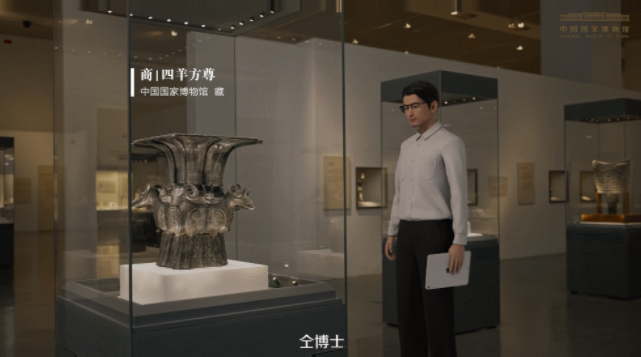
Just before the 2023 Chinese New Year, virtual AI staff member Dr. Tong Gujin joined the National Museum of China’s Institute of Conservation at Shiliuzhuang in Beijing and made his public debut via a short video clip.
As the same moon is enjoyed in both ancient and contemporary times, “Gujin” means the “ancient and contemporary”; while the Chinese character for “Tong” (spelled with the radicals for “artificial” and read as a homonym of the character meaning “to connect”) represents the connection between history and today’s reality, the connection between online and offline, and the communication between exhibitions and visitors. Tong Gujin’s name is a metaphor for the virtual staff of the National Museum of China telling China’s story both inside the exhibition halls and on digital platforms. Led by AI technology, virtual staff members leverage the extensive collections and exhibition systems of the National Museum of China in their search for the origins of culture and to showcase its beauty and spirit.
The appointment of virtual human Tong Gujin enables relics to leave their storage rooms and emerge from digital screens with the sense of history they carry. During the 110th anniversary of the National Museum of China’s founding, the museum’s first virtual human Ai Wenwen made her public debut on July 22, 2022. Her name is a metaphor for a love of Chinese relics and culture. These measures are part of the museum’s efforts to continuously leverage the power of modern technology to connect history with the world today. It also showcases the museum’s innovative exhibitions methods, and represents an important venture by the museum to bring relics to life and advance the development of new museum and cultural industry through digital technology.
Source: National Museum of China
